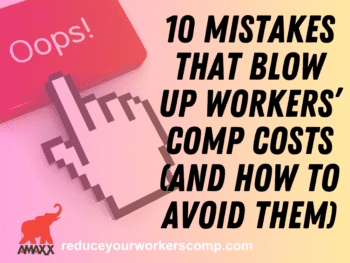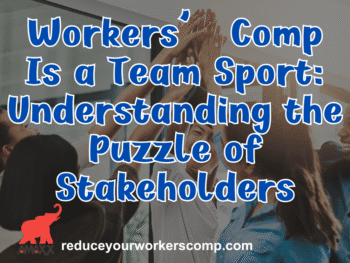Reporting a work injury is an essential component of any successful workers’ compensation program. Failure to do so can result in various sanctions and adverse admissions. It also calls into question the integrity of a program. Proactive claim management teams are able to report all claims in a timely manner and establish a partnership with the employer and other interested stakeholders to get a claim started in the right direction.
First Report Requirements
State workers’ compensation laws or regulations provide guidance when it comes to filing a report of injury in a timely manner. This requires members of the claim management team and interested stakeholders to know the laws of the states they work in. Other important factors to consider include the nature/extent of an injury or even death. In most instances, an injury that results in death must be reported within 24 hours.
Click Link to Access Free PDF Download
Failure to report injuries in a timely manner can have the following adverse consequences:
- Sanctions imposed by the state industrial board or labor commission;
- Inability to assert various affirmative defenses to deny claims. This can include arguments concerning statute of limitations, statutes or repose and notice defenses; and
- Assessment of penalties by state and federal OSHA agencies.
Methods of Reporting Work-Related Injuries
State law or regulation also sets forth the requirements for what must be reported and the method of reporting. The general rule prescribes that a “First Report of Injury” must be filed with the state labor department or industrial commission. In order to assist clients, members of the claim management team should provide a number of options and tools to help complete this form. This can include:
- Creation of an electronic workers’ compensation forms database that include a First Report of Injury;
- An Internet based claim platform that includes direct links to workers’ compensation forms with the option to directly file it with the appropriate state agency upon completion;
- Telephonic access and assistance in completing forms for those who do not have direct access to the Internet; and
- Ability to receive all claims for and First Reports of Injury electronically.
Members of the claim management team should also have the ability to assist employers and other interested parties with common questions on a First Report of Injury. It is important to remember that this form needs to be fully and accurately. It should also be done so in a timely manner.
FREE DOWNLOAD: “5 Critical Metrics To Measure Workers’ Comp Success”
Going the Extra Mile for Your Clients
Any workers’ compensation carrier or third-party administrator can help their clients complete the necessary and routine matters for workers’ compensation claim management activities. However, the claim management teams that provide value to their services excel in client retention and claims handling best practices. Here are some “value add” for those wishing to be best in class:
- Provide training on workers’ compensation best practices for employer clients. This includes the necessary elements of claim report on the employer end of claims.
- Provide reference materials for employees and injured workers in the claims process. While claim management teams have a fiduciary duty to only their clients, helping those suffering from the effects of a work injury adds compassion to the process and buys good will.
- Triage nurse services are another important component a best practices the claims industry should consider. Nurses in these triage centers can help direct care and reduce the wait time for injured parties in the need of medical care and treatment.
Conclusions
Timely reporting of a workers’ compensation claim is a necessary component of any program. Successful claim management programs must provide the right type of services to assist their clients to ensure the timely and accurate reporting of all claims. They can also add value to their programs to ancillary services that buy good will and add a human component to their program, which assists injured workers.
 Author Michael Stack, CEO Amaxx LLC. He is an expert in workers’ compensation cost containment systems and helps employers reduce their workers’ comp costs by 20% to 50%. He works as a consultant to large and mid-market clients, is a co-author of Your Ultimate Guide To Mastering Workers Comp Costs, a comprehensive step-by-step manual of cost containment strategies based on hands-on field experience, and is the founder & lead trainer of Amaxx Workers’ Comp Training Center, which offers the Certified Master of Workers’ Compensation national designation.
Author Michael Stack, CEO Amaxx LLC. He is an expert in workers’ compensation cost containment systems and helps employers reduce their workers’ comp costs by 20% to 50%. He works as a consultant to large and mid-market clients, is a co-author of Your Ultimate Guide To Mastering Workers Comp Costs, a comprehensive step-by-step manual of cost containment strategies based on hands-on field experience, and is the founder & lead trainer of Amaxx Workers’ Comp Training Center, which offers the Certified Master of Workers’ Compensation national designation.
Contact: mstack@reduceyourworkerscomp.com.
Workers’ Comp Roundup Blog: https://blog.reduceyourworkerscomp.com/
©2021 Amaxx LLC. All rights reserved under International Copyright Law.
Do not use this information without independent verification. All state laws vary. You should consult with your insurance broker, attorney, or qualified professional.
FREE DOWNLOAD: “5 Critical Metrics To Measure Workers’ Comp Success”















